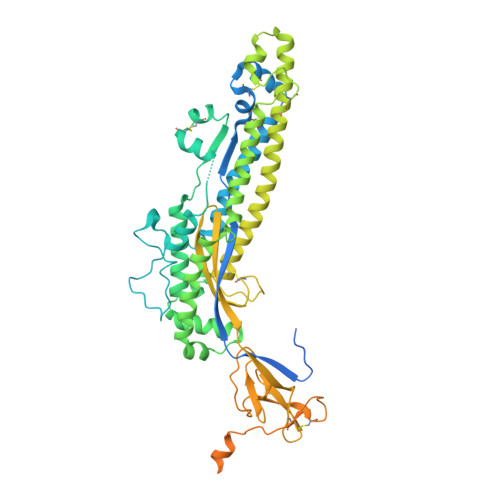A broadly generalizable stabilization strategy for sarbecovirus fusion machinery vaccines.
Lee, J., Stewart, C., Schafer, A., Leaf, E.M., Park, Y.J., Asarnow, D., Powers, J.M., Treichel, C., Sprouse, K.R., Corti, D., Baric, R., King, N.P., Veesler, D.(2024) Nat Commun 15: 5496-5496
- PubMed: 38944664
- DOI: https://doi.org/10.1038/s41467-024-49656-5
- Primary Citation of Related Structures:
8VQ9, 8VQA, 8VQB - PubMed Abstract:
Evolution of SARS-CoV-2 alters the antigenicity of the immunodominant spike (S) receptor-binding domain and N-terminal domain, undermining the efficacy of vaccines and antibody therapies. To overcome this challenge, we set out to develop a vaccine focusing antibody responses on the highly conserved but metastable S 2 subunit, which folds as a spring-loaded fusion machinery. We describe a strategy for prefusion-stabilization and high yield recombinant production of SARS-CoV-2 S 2 trimers with native structure and antigenicity. We demonstrate that our design strategy is broadly generalizable to sarbecoviruses, as exemplified with the SARS-CoV-1 (clade 1a) and PRD-0038 (clade 3) S 2 subunits. Immunization of mice with a prefusion-stabilized SARS-CoV-2 S 2 trimer elicits broadly reactive sarbecovirus antibodies and neutralizing antibody titers of comparable magnitude against Wuhan-Hu-1 and the immune evasive XBB.1.5 variant. Vaccinated mice were protected from weight loss and disease upon challenge with XBB.1.5, providing proof-of-principle for fusion machinery sarbecovirus vaccines.
- Department of Biochemistry, University of Washington, Seattle, Washington, USA.
Organizational Affiliation:


















